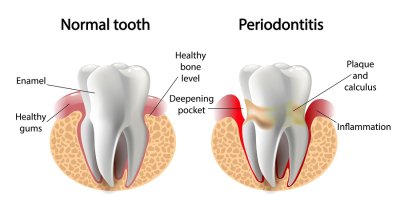A Look at the Stages of Periodontal Disease

Many people suffer from one of the three stages of periodontal disease—gingivitis, periodontitis, or advanced periodontitis. When patients suffer from periodontal disease near Peoria, they may need various types of treatments to correct and renew their smile. These treatments may include deep cleanings, improved daily dental care, tooth extractions, and dental implants to replace any missing teeth. This article will take a look at the various stages of periodontal disease to give you a better picture of what type of treatment may be necessary.
Stage 1: Gingivitis
Gingivitis is the first stage in periodontal disease and the only stage that is reversible. Many people around the United States and the world have gingivitis, even though it can be easily prevented and reversed. Signs of gingivitis typically include swollen and red gums that may bleed when flossing or brushing. It is caused by plaque buildup around the gums, but it can be reversed with good daily dental care and by seeing a dentist for regular teeth cleanings and oral exams.
Stage 2: Periodontitis
If daily dental care has not improved, then gingivitis may progress to periodontitis, the second stage of periodontal disease. Patients may notice their breath smells bad, and their gums feel sore at times, in addition to bleeding and appearing swollen. Pockets of infection that gather food and plaque have begun to develop in the gums. The pockets of infection will begin to break down the bone and supporting tissues that hold the teeth in place. If periodontal disease treatment is started immediately, this stage may be halted and recovered.
Stage 3: Advanced Periodontitis
In the last stage of periodontal disease, patients’ supporting gum tissues and bones have been destroyed. The teeth may begin to shift or feel loose, resulting in potential tooth extractions and extensive periodontal disease treatment. In the event that teeth may not be saved, patients may consider having dental implants or dental bridges to replace the missing teeth. These options may be available, but patients’ oral and overall health must improve drastically for a dental implant procedure to be effective.
